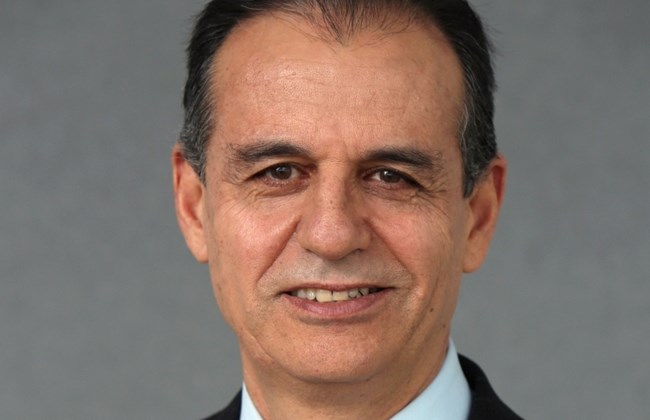Stronger dollar, lower oil prices to boost economy

BEIRUT: Declining oil prices and a stronger dollar are expected to encourage consumption and contribute to a modest economic rebound in Lebanon in 2015, according to the preliminary annual findings of the International Institute of Finance.
IIF Deputy Director for the MENA region Garbis Iradian told The Daily Star that Lebanon’s real GDP growth is forecast at 2.8 percent in 2015, up from an estimated 1.7 percent in 2014.
The IIF forecasts are based on an average Brent crude oil price of $60 per barrel in 2015 compared to $109 per barrel in 2013 and $98 per barrel in 2014.
“Lebanon will benefit from the sharp fall in oil and non-fuel commodity prices as production costs decline and disposable incomes rise,” Iradian said during an exclusive interview shortly before he ended a 10-day long visit to Beirut.
During his fact-finding tour in Beirut, Iradian met with Lebanese government and Central Bank officials, executives of commercial banks and private sector representatives.
According to Iradian’s preliminary findings, Lebanon’s Central Bank will maintain the current interest rates throughout 2015 even if the U.S. rates rise slightly in the second half of this year.
“The exchange rate stability and low inflation will allow the Central Bank to continue with its stimulus package for the third consecutive year,” Iradian said.
The IIF forecasts Lebanon’s average inflation rate to drop from 1.6 percent in 2014 to 0.5 percent in 2015, mainly owing to lower global commodity prices and the significant appreciation of the Lebanese pound via the country’s main trading partners, particularly the eurozone.
The Lebanese pound, which is pegged to the U.S. dollar, has gained significantly against the euro since the European Central Bank announced its quantitative easing program last month, sending the euro to an 11-year low of $1.1115.
According to the IIF, lower oil prices and a stronger Lebanese currency will reduce the cost of Lebanon’s imported goods from an estimated $19.2 billion in 2014 to $17.2 billion in 2015.
This will significantly improve the country’s current account balance, Iradian said, predicting a decrease in the external current account deficit from about $10 billion or the equivalent of 21.5 percent of GDP in 2014 to $7.5 billion or the equivalent of 15 percent of the estimated GDP in 2015.
Remittance inflows to Lebanon will remain broadly stable despite the decline in oil prices, Iradian said, arguing that ample foreign assets and low debt in the GCC countries will enable authorities to sustain the robust government spending that will support growth in non-oil sectors.
The slump in oil prices will also slash government transfers to the state-owned Electricite du Liban from an estimated $1.9 billion in 2014 to $1.2 billion in 2015. However, Iradian said the saving in EDL transfers would be largely offset by lower VAT and custom receipts that are associated with lower imports in nominal terms in 2015.
Finance Minister Ali Hasan Khalil said earlier that the drop in oil prices reduced allocations to EDL by $500 million at least in 2014.
Lower revenues and subdued government spending will keep the fiscal deficit at 7.5 percent of GDP in 2015, Iradian said, noting that the government is unlikely to endorse a wage hike for public servants this year.
The fiscal deficit narrowed significantly in 2014 to reach 7.5 percent of GDP as opposed to 9.3 percent of GDP in 2013, according to the IIF’s revised estimates.
Iradian said the significant narrowing of the fiscal deficit in 2014 despite weak economic activity is due to an improvement in tax collection, one-off factors related to the collection of arrears from previous years and lower capital expenditures.
The improving fiscal situation reversed a small primary deficit in 2013 to a surplus of $690 million or the equivalent of 1.4 percent of GDP in 2014. The government debt to GDP ratio increased slightly from 139 percent of GDP in 2013 to 140 percent in 2014 and is forecast to reach 141.3 percent in 2015, Iradian said.
The IIF projected the primary balance at 1.3 percent of GDP in 2015 compared to 1.4 percent in 2014 and a primary deficit equivalent to 0.5 percent of GDP in 2013.
The Lebanese economy has suffered a major slowdown since the outbreak of the conflict in Syria in 2011, prompting Lebanon’s Central Bank to launch three stimulus packages since then.
Central Bank Governor Riad Salameh announced in October a $1 billion economic stimulus package for 2015 to stimulate a slowing economy. The fresh round of stimulus follows two previous packages of $1.4 billion and $800 million in 2014 and 2013 respectively.
Lebanon’s GDP growth decreased to 1.2 percent in 2013 from 3 percent in 2011 when the Syrian conflict broke out, bringing to an end three years of nearly double-digit growth for the Lebanese economy.
The stimulus targets the real estate sector with over 50 percent of loans reserved for housing with a ceiling of LL800 million per loan. The real estate sector has suffered the most as a result of political and security instability that has scared off both local investors and those from Gulf countries.




